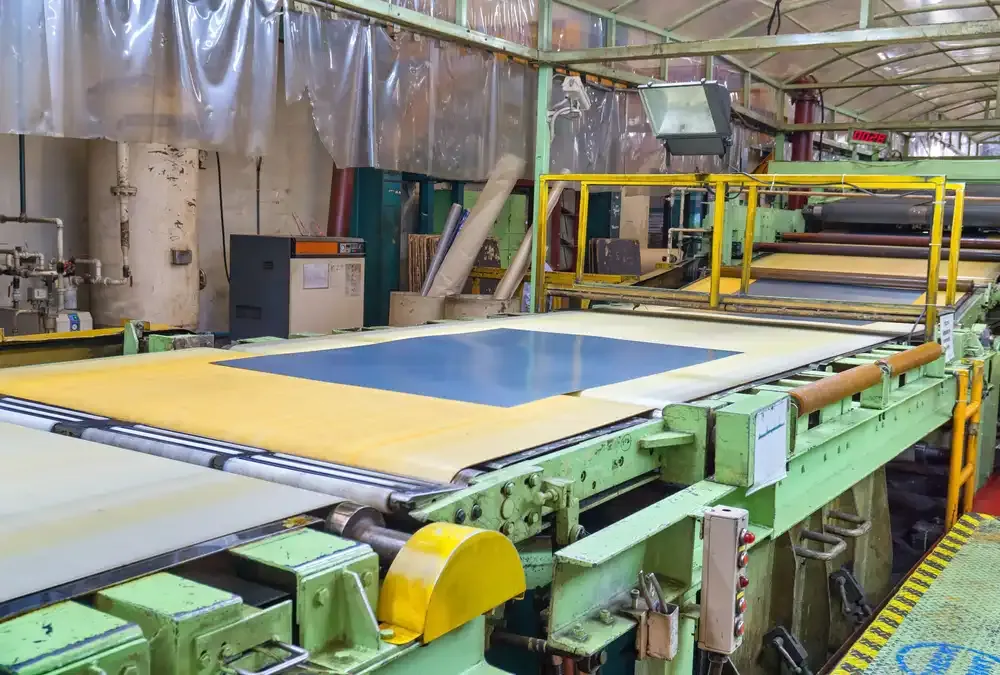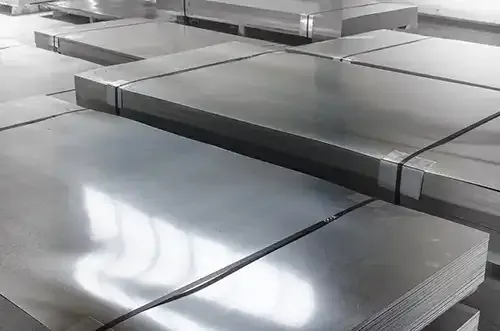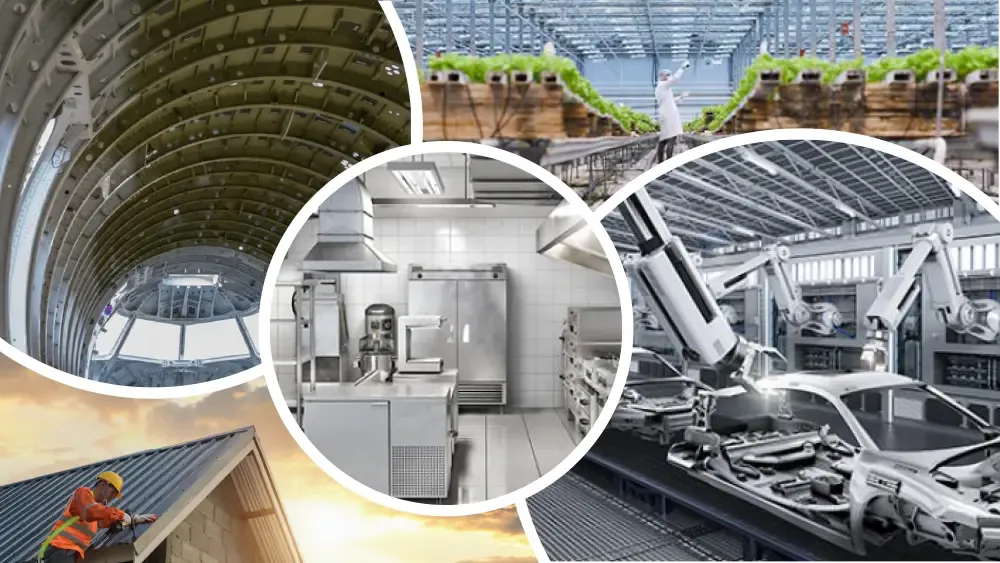Cut-to-Length Material Processing
To create the right material solution, you need the right tool for the job.
And for top-of-the-line metals processing, that requires machinery that’s as precise as it is efficient to reduce scrap and downtime. One method that checks all these boxes is cut-to-length material processing.
Cut-to-length is one of the most popular methods of turning large metal coils into manageable workpieces. Its speed, accuracy, and ability to work with a variety of metals have solidified the cut-to-length line’s place in the metals industry.
Cut-to-Length Material Processing: The Basics
The cut-to-length process involves slicing large metal coils into manageable lengths. This process incorporates several large machines, together known as a “cut to length line”.
This process is perfect for hard or thick materials like steel, stainless steel, and aluminum. Cut-to-length machines work quickly and can accommodate precise measurements, so it’s an ideal cutting method for many different applications.

Understanding the Cut-to-Length Line Process
The first component of the cut-to-length line is the uncoiler, which holds the metal coil. The metal then uncoils as it feeds through the machine and is sliced with a large, sharp knife called a shear. Once the aluminum or steel coil is cut into sheets, the machine stacks the sheets into neat piles for sale, customization, or storage.
Sheet metal can be processed into just about anything with custom cuts, custom shaping, or rolling into a thinner sheet. And thanks to technological advancements, our newest cut-to-line processing machine can accommodate coils up to 30” wide and gauges as light as 0.004!
Like most industrial operations, cut-to-length processing has a long history.
History of Cut-to-Length Material Processing
The metal industry can thank the Industrial Revolution of the eighteenth century for the evolution of coil processing and cut-to-length lines. That era saw a huge increase in sheet metal demand for applications like bridges, trains, and construction and thus a surge in innovation to process metals more quickly and efficiently.
Back in those days, metalworkers used shear-punching machines and steam-powered hammers. These automated tools allowed for cost-effective mass production of sheet metal. During the twentieth century, though, full cut-to-length lines dramatically evolved. Current machines have higher shear strokes per minute and larger coil processing capacities and can accommodate custom cuts. It is, after all, the equipment that makes the cut-to-length line work so well.

Equipment Used for Cut-to-Length Lines
The evolution of the cut-to-length machine has led to several different types of machinery. The first is called the flying shear machine. Here, the metal is continuously fed through the machine, and the shear slices the material into a predetermined length. Since the material is constantly moving and the shear is constantly cutting, this method maximizes productivity.
A second type of cut-to-length machine is the hump line. As the material runs through the machine, the metal sheet “humps” up a bit, and the shear cuts through the middle of the hump. Finally, a third type of cut-to-length machine is called a row feed line with looping pit. In this process, the metal sheet continuously feeds through a looping pit and stops at the shear to be cut.
Although it’s an efficient process, not all materials are suitable for this type of cutting. It’s important to understand which substrates can and cannot go through this process.
Raw Materials Used in Cut-to-Length Processing
Not all raw materials are suitable for cut-to-length processing. The machinery has capacities for weight, material strength and density, and coil size that some raw materials exceed — and not all metals react well to the process.

However, many materials are perfect for the length line, which is one of the reasons it’s such a popular process.
The most common raw materials used in cut-to-length processing are aluminum and steel. These metals hold up well throughout the coiling, uncoiling, cutting, and stacking phases. They’re also easily processed after they’ve been cut into workable sheets. After they go through the cut to length line, they can be turned into a variety of different products.
Most Common Metals Used
Overall, the most common metals used in cut-to-length processing are steel, stainless steel, and aluminum. Once processed, each workpiece can be customized based on the necessary size and shape. Thanks to the durability and versatility of these materials, they can be used for just about anything!
Uses of Cut-to-Length Processing
Sheet metal is everywhere! And many of the metal products that you encounter in your daily life were likely processed on a cut length line. Cut-to-length materials have seemingly countless applications across just about every industry.
Applications and Industries
Essentially, every industry that uses sheet metal uses cut-to-line products. Here are just a few examples of cut-to-length metal common in daily life:
- Appliances like your stove, oven, and dishwasher
- Food packaging, particularly canned goods
- Car and truck bodies
- Agricultural equipment
- Roofing for commercial and residential buildings
- Airplane fuselages
- Medical machinery and equipment

Because cut-to-length processing is so quick and efficient, metalworkers can consistently provide a large amount of sheet metal to a wide variety of industries. However, since not all materials work in a cut to length line, and since some end users require more customization than a simple cut by shear tooling, there are alternate methods of cutting metal.
Alternate Methods
The cut to length line isn’t the only method of processing metal. Here are a few alternate methods that are sometimes better suited to a particular material or to achieve the final product’s specification requirements:
- Miter cutting, in which a circular saw blade cuts through the material.
- Laser cutting, where a very hot laser melts through the metal. This is an extremely precise process.
- Water jet cutting, also very precise. In this process, water combined with an abrasive substance is forced at very high pressure through a nozzle to cut through the material.
- Stamping, in which metal is run through a tool and die.

Despite these alternate methods, it’s difficult to match the benefits of cut-to-length processing.
Benefits of Cut-to-Length Processing
Although other methods of metal cutting are available, cut-to-length processing is far superior. While other methods have material waste and machine or personnel downtime, cut-to-length processing is perhaps the quickest and most efficient way to turn metal coils into workable metal sheets.
Here’s a look at some of the benefits of cut-to-length processing lines:
- Minimized manual material handling. As the metal is uncoiled into the machines, the top and bottom surfaces are preserved. The cut sheet has two flat, workable surfaces.
- Automation. Thanks to advancements in machine engineering, cut-to-length machinery can be programmed to cut the material to just about any desired length.
- High productivity. Since the coils are continuously fed through the machines, they keep working until the material runs out—there is no downtime.
- Low material cost. Because of high productivity, metal processors can supply their customers with a high-quality product at a reasonable price.
- Reduced processing time. The efficient machines output sheet metal that is ready to be made into any custom size or shape immediately.
- Reduced scrap by cutting to exact measurements. Instead of losing material to runoff, cut-to-line processing makes precision slices and utilizes every square inch of the metal coil.
- Streamlined material flow. Metal coils can be lined up to go through the length line. And at the end of the line, the machines neatly stack the newly cut sheets so they can be further processed without any delay.
- Precise tolerances and specifications.
Cut-to-length processing is perfect for materials in a circular economy like aluminum and stainless steel. Greener materials and more efficient processes help the environment. That’s just one more benefit of cut-to-length processing!

NEW Cut-to-Length Capabilities at Ulbrich of Illinois for Wider Widths & Lighter Gauges!
We’re proud to announce that we’ve upgraded our processing capabilities with a new, state-of-the-art CTL line in our Ulbrich of Illinois facility. We can now uncoil, shear, and auto-stack sheet with widths up to 30” and gauges as light as .004. Stainless, aluminum, electrical steel, and more!
Expanding our in-house processing capabilities allows us to save our valued customers time and money. Your specialized projects demand specialized tools able to solve your most pressing challenges.
For more information about cut-to-length material processing, contact an Ulbrich specialist today.


